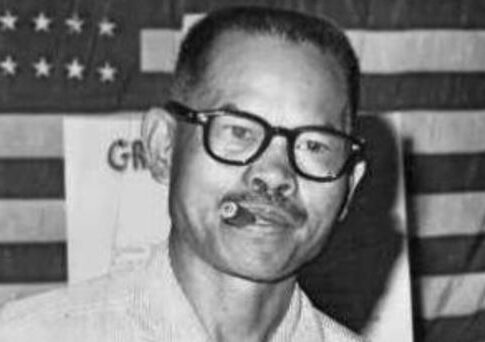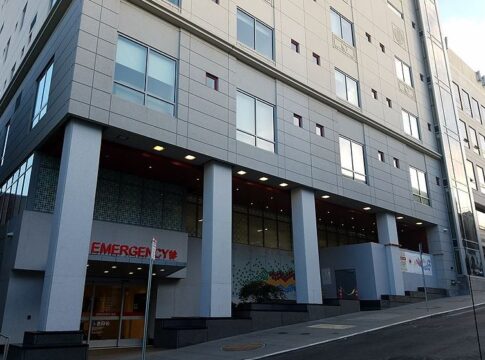
By Kathleen Burkinshaw , Special to AsAmNews
(Note from the Editor: Author Kathleen Burkinshaw wrote this article in response to our news story that Rachel Wood has been cast as a central character in a true story about a Hiroshima atomic bomb survivor.)
I’ve purposely waited to respond to the announcement of Director Richard Raymond’s film, One Thousand Paper Cranes, based on story of Sadako, 1000 cranes, and the Peace statue in her memory. As the daughter of a Hibakusha (Hiroshima survivor), I visit schools to discuss my mother’s experience on August 6th as well as the events in my book, The Last Cherry Blossom. My novel is based on her life during the last year of WWII in Hiroshima. It’s through her 12-year-old eyes, readers witness the horror and loss of that day. So, of course, I have concerns and my opinions.
Since the director clarified that the movie is based on the beautiful story, One Thousand Paper Cranes, written by the respected Japanese author Takayuki Ishii, I am even more confused as to why the White Canadian American author, Eleanor Coerr’s character, is in the film at all. I understand (which is different from agreeing with it) that in 1977 when her book Sadako and The Thousand Paper Cranes, published, a Hiroshima survivor story sold in the United States had to be written by a White author.
LATEST STORIES
However, in 2019, I’m perplexed as to why a White Canadian American must have a role illuminating the story of the most horrific, tragic event in Japanese history. Yes, #OwnVoices need to tell our stories first! That being said, my questions are:
Why does the director, Mr. Raymond feel he must tell this story? Is Mr. Raymond or the screenwriter, Ben Bolea, of Japanese heritage? Did they have a family member that is/was a Hiroshima or Nagasaki survivor? I have a feeling I know the answers to these, but I hope I am wrong.
Mr. Raymond states he received support from Sadako’s family, the Hiroshima Peace Museum, and the Hiroshima Film commission. But did they give support after seeing the actual script or just based on a summary that the director/screen writer gave them?
Will they have a Japanese Historian on WWII Japan, someone who experienced the bombing at an age old enough to remember that time, or relative of someone who did on set to advise?
While the actual answers to the above questions will affect my future opinion, I wish to give my opinion now based on what has been said to date and after reading Ishii-san’s novel.
I have a deep respect for Sadako and her family. Sadako’s strength inspires me and touches my heart. I love the message of her statue in Hiroshima Peace Park with its dedication as a “symbol of peace for all the children of the world.” That wish extends to my mother and all children who died immediately that day, years later, or lived their adult lives with the tragic memories emblazoned on their heart. My mom experienced all of that within her family. Therefore, Sadako’s story is a very, very meaningful message to me.
However, while Ishii-san’s novel has one chapter on the day of the bombing itself, Sadako is only 2- years-old at the time. The remainder of the book deals with the aftermath 9 years later when she becomes ill from the radiation effects of the atomic bomb.
It’s unknown how the director intends to depict the actual day (August 6th) itself, but I do hope it is not minimized. Instead, I hope he depicts the scene realistically in a way that respects the horror that victims experienced that day and then carried in their minds for the rest of their lives.
If it is based on Ishii-san’s book, this film’s messages will be of hope, heart-felt sympathy to Sadako, her family, atomic bomb victims, and spotlight Sadako’s bravery-all that it deserves.
Yet, I feel that there is one aspect not fully given when only telling the story of someone’s life after the bomb dropped. That aspect is the point of view from the eyes of a 12-year-old or teenager describing what life was like in Hiroshima prior to the bombing. To make an emotional impact by describing the horror they directly witnessed and of what they lost on August 6th. Those moments that they relive in their nightmares for the rest of their lives. My mother lost her entire family, home, and friends as a result of August 6th.
This side of the atomic bombing story also needs to be told. Just as we have and need to know more than one Holocaust survivor story. Each Holocaust survivor’s perspective is just as important as Anne Frank’s point of view of the Holocaust. Anne Frank’s story does not diminish the other Holocaust survivors’ stories, nor does the telling of other Holocaust survivor’s perspective diminish Anne Franks.
Therefore, I don’t want One Thousand Paper Cranes, to be the only point of view portrayed on screen about the Hiroshima or Nagasaki atomic bombings. I believe that Sadako’s story should be told, (if it can be told authentically). However, it should not be the last story to be portrayed of the atomic bombings. I emphatically believe that other atomic bomb victims’ perspectives matter, as well. For the longest time, my mother felt that her story didn’t matter. I’m honored that I could show her that it did before she passed away in 2015. I don’t want the other survivors from the Hiroshima and Nagasaki atomic bombings (including victims of those bombings that were from other countries) pass away and some not knowing their voice mattered and their stories deserve to be heard.
About the Writer: Kathleen Burkinshaw is a daughter of Hibakusha and author of The Last Cherry Blossom, which has been nominated for numerous awards








RE: Why aren’t Asians being allowed to tell their own Stories in Hollywood’s One Thousand Paper Cranes: Hello. I am Nancy WANG and my partner Robert KIKUCHI-Yngojo tell the story of Takashi Tanemori’s story who also lost his parents and most sibs in the bombing at age 8. It is a beautiful story of his journey from rage and revenge to forgiveness and reconciliation. We have a dvd and a cd of the story and performed it around the country and even in Austria. Very important story. He is still alive and would accompany our presentation and answer questions in the post-performance dialogue.